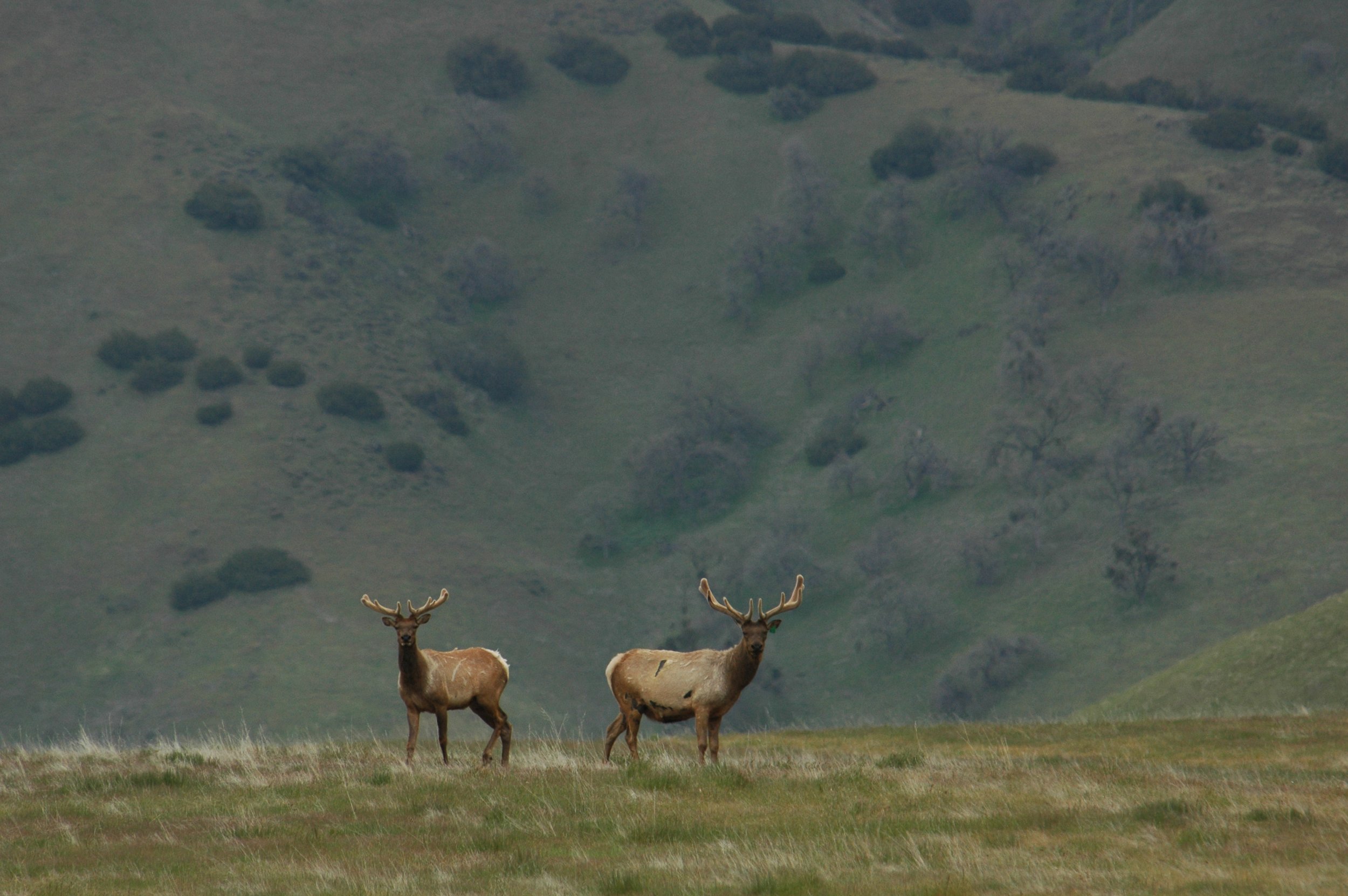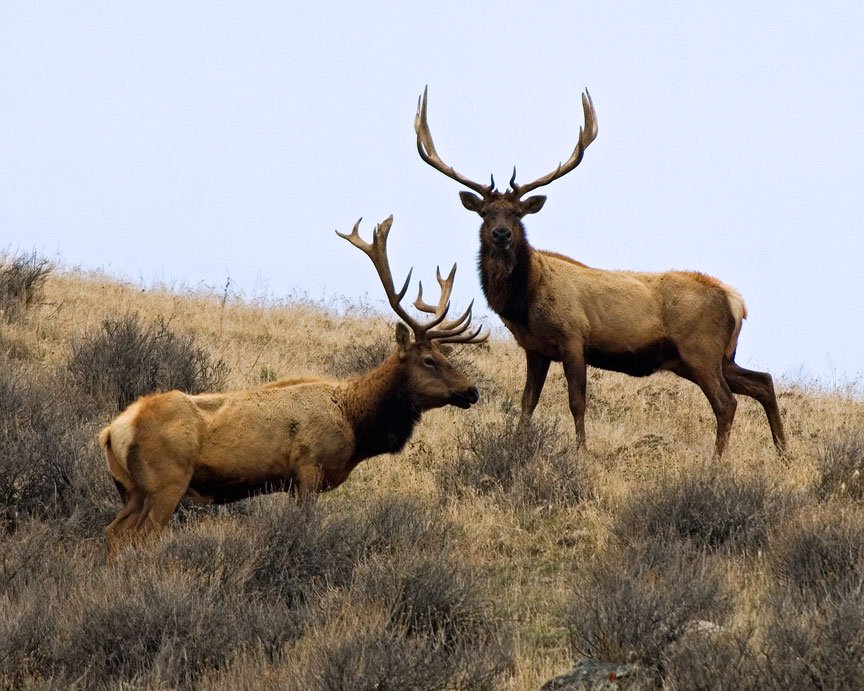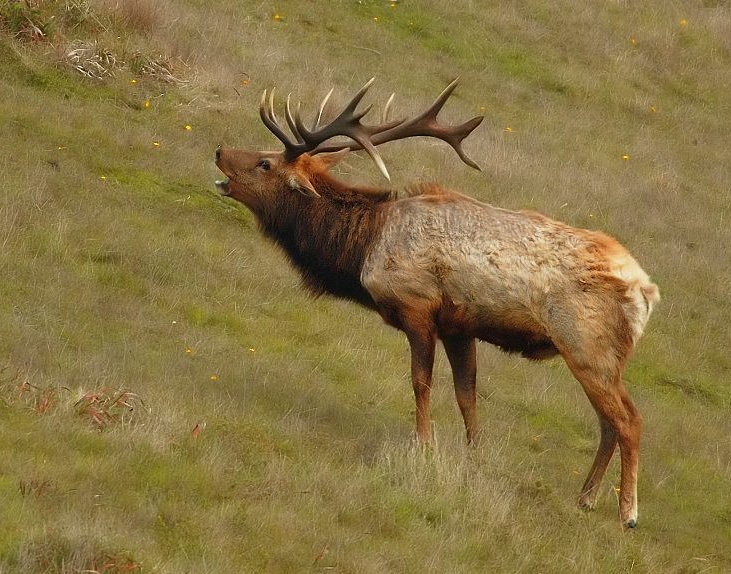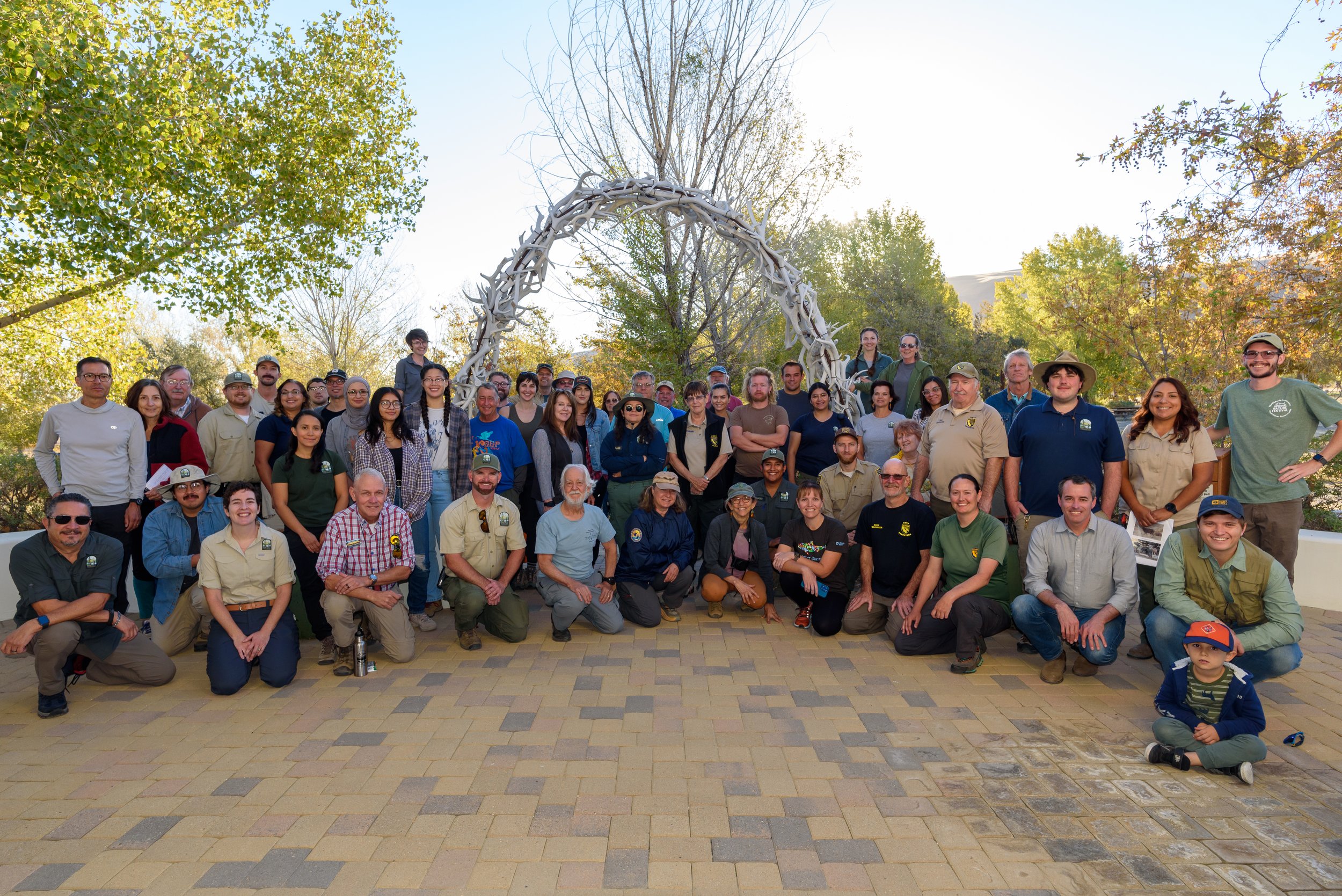Tule Elk at Wind Wolves Preserve
This video footage was captured by Melissa Dabulamanzi, who is now the Central Valley Regional Director, during the 2013 elk rut!
TULE ELK
(Cervus canadensis nannodes)
Tule elk are one of three subspecies of elk found in California, and are the smallest of all elk species in North America. They are related to deer, but are much larger. Tule elk are endemic to California, meaning they are only found in this state, and live in open country and semi-desert habitats.
HISTORY OF THE TULE ELK
Records from early explorers indicate that as many as 500,000 tule elk once roamed Central California. The population declined significantly due to hunting and habitat loss during the gold rush settlement. By 1870, tule elk were thought to be extinct, but in 1874 a small herd was discovered on a ranch near Bakersfield. Henry Miller, the ranch owner, protected the elk on his land and the population began to rebound. After many habitat improvement projects by the California Department of Parks and Recreation and relocation efforts by what is now the California Department of Fish and Wildlife, the state’s tule elk population has increased to approximately 6,000 individuals as of 2023.
ECOLOGICAL ROLE
Tule elk are grazers and browsers that co-evolved with native species of bunchgrasses, oaks, shrubs, and herbaceous forbs (flowering plants). They are essential to the reestablishment of native, perennial bunchgrasses as their hooves help transport plant seeds.
RECOVERY EFFORTS AT WIND WOLVES PRESERVE
In 1998, The Wildlands Conservancy coordinated with the California Department of Fish and Game to relocate tule elk to Wind Wolves Preserve. From nearly 100 elk released onto this landscape over the years, the population has successfully grown to approximately 500 individuals and is expected to continue rising.
Photo by Gary Peplow, docent for The Wildlands Conservancy.
REINTRODUCTION OF TULE ELK AT WIND WOLVES
In 1998, The Wildlands Conservancy (TWC), in partnership with the CDFW, coordinated an effort to restore a population at Wind Wolves Preserve (WWP). Nineteen tule elk were initially released, and several translocations have taken place over the years. All translocated elk were marked with ear tags or radio collars managed by CDFW.
Since 1998, the herd has increased significantly. Habitat improvements and rangeland enhancements such as wildlife troughs, riparian fencing, native plant restoration, rotational grazing management, and mineral blocks support the elk population and other wildlife.
To monitor the population, herd health, and landscape improvements, TWC staff and volunteers conduct an annual tule elk count at the end of summer.
Read about the 2022 Tule Elk Count in our staff report or through the eyes of Denise Hamilton, a journalist who joined us for the annual event, in her article for Alta Magazine Rounding the Horn.






